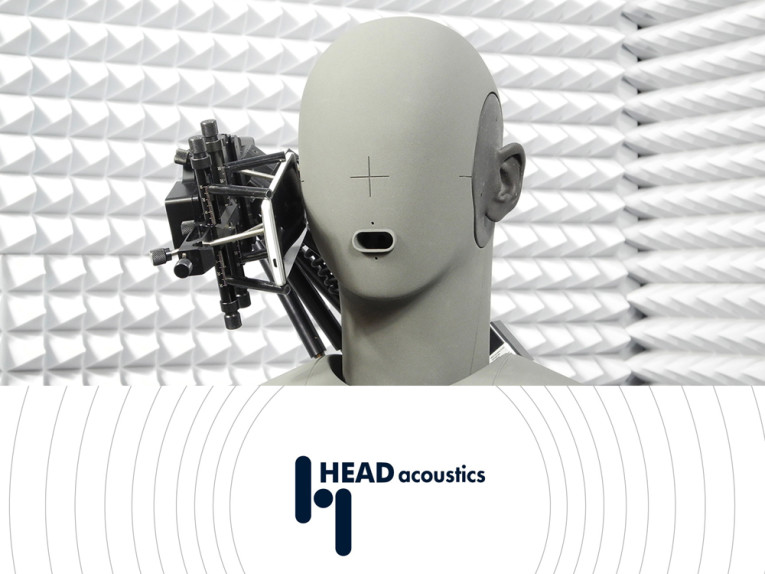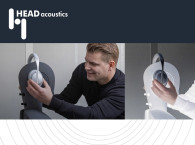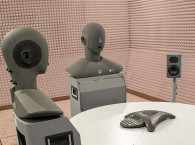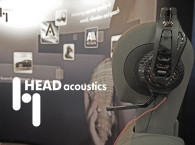HEAD acoustics' 13-part seminar series begins Tuesday March 6, 2018 with sessions on "How We Hear Sounds" at 10am EST and again at 2pm EST, and will continue until May 29, 2018 where things wrap up with "Noise Simulation Methodologies".
The HEAD acoustics website provides detailed descriptions of each topic in the series, as well as links to register for the sessions, which include the following:
Advanced ANC Headphone measurements
Active Noise Cancellation (ANC) in headphones has been available for several years, and has seen significant improvements in the amount of peak attenuation achievable. Typically the performance will be assessed by comparing spectrums of ANC OFF and ANC ON, with the headphone exposed to simple broadband noise signals. This presentation will offer a look at a more realistic test scenario that better stresses the DSP and microphones in the headphones. Additionally, the presentation will introduce several other metrics and algorithms that can be applied to better gauge headphone ANC performance and relate to the perception of the “annoyance” of the residual noise.
How We Hear Sounds
The human sense of hearing is both fascinating and complex with many physiological and psychological aspects to consider. Understanding the psychology of human hearing is not an easy task and beyond the scope of voice quality testing today…but understanding how the human ear works from a physiological perspective has been well documented for many years. In this web seminar attendees will be introduced to the basics of the human ear, the physics of hearing and how it impacts voice quality testing.
Introduction to Frequency Analysis Techniques
In order to make the most of interpreting and understanding results from testing it is critical to have a good underlying knowledge of how data is analyzed. For voice quality tests frequency analysis is used extensively as a way to break a complex voice signal down in to components more easily understood by engineers. Since many different frequency analysis techniques are available it is important to have a general understanding of each technique and how it works.
Voice Quality Source Signals
Most voice quality testing metrics are based on system analysis techniques. System analysis is the process of introducing a known excitation signal in to a device and measuring its response. By knowing the input excitation and the output response, one can characterize the behavior of the device in an accurate and repeatable way. With that in mind, the source signal used for testing is critical and needs to provide the appropriate level, frequency, and time content. In this web seminar attendees will be introduced to the different types of source signals used for voice quality testing.
Speech Transmission & Intelligibility Index Metrics
In speech communication, many different metrics can be used to quantify ‘good’ and ‘bad’ performance. Voice is a very difficult signal to analyze and things like background noise, reverberation, echo and room acoustics can have a huge influence on how that voice is understood and interpreted. In this web based seminar attendees will be introduced to the basic Transmission and Intelligibility Indexes.
Mean Opinion Scores (MOS)
One of the main goals of many voice quality test programs is to come up with a single, easy to interpret metric that can provide information about how ‘good’ or ‘bad’ a voice signal. As discussed in previous web seminars, it is not easy to objectively quantify voice; therefore, many other metrics have been introduced that try to analyze specific voice quality attributes. In recent years both technology and methodologies have been introduced that can now calculate such a single metric which is referred to as a Mean Opinion Score, more commonly referred to as a MOS. In this web seminar attendees will be introduced to MOS metrics used in voice quality testing.
Packetized Audio
In speech communication, we have slowly transitioned from circuit based calls (think landlines/early cell phone technology/etc.) to packet switch calls (think VoIP/VoLTE). Many of our goals remain the same: we still desire great speech AND conversational quality. But the underlying technology now requires more diligence in a few areas when tuning and testing a device. In this web based seminar attendees will be introduced to the basic packetized audio measurements and how we to pay extra attention to elements like Delay and clock drift, Discontinuous Transmission and Comfort Noise, and Network Impairments and voice quality.
Noise Suppression Measurement Techniques
As DSP technology has become more cost effective to deploy, it has become possible for communication devices to utilize this power to actively suppress background noise in voice calls. This has improved the quality of voice calls significantly in recent years provided the noise suppression techniques only reduce noise and not affect the voice. Quantifying how much noise suppression has been applied and evaluating its impact on voice quality is important to ensure that the voice call is indeed better with noise suppression, not worse. Since there are many noise suppression methods used in voice quality testing, this web seminar has been divided up in to 2 sessions.
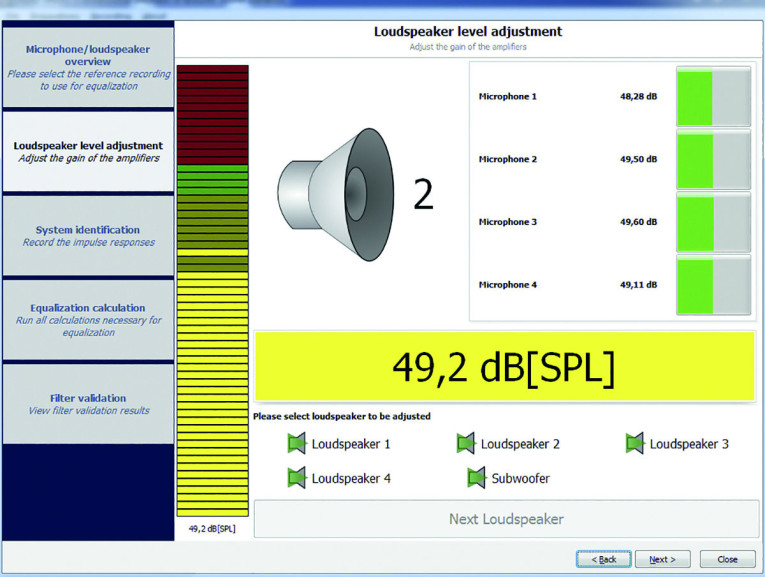
Noise Simulation Methodologies
Modern communication devices can be exposed to a wide variety of background noises that can stress a noise suppression system in many ways. In order to properly test a noise suppression system it is desirable to expose devices to a wide variety of background noises. But in order to ensure that two tests are done comparably, it is important that the background noise is accurate and repeatable. If that device is not exposed to such a background noise, then it is very difficult to quantify the noise suppressor’s performance in a meaningful way. In this web seminar attendees will be introduced to the common methods for reproducing background noise in a lab and ways to verify the accuracy and repeatability of that noise reproduction.
Other sessions are fully described in the link below.
www.head-acoustics.de/eng/training_center_telecom_webinars.htm



